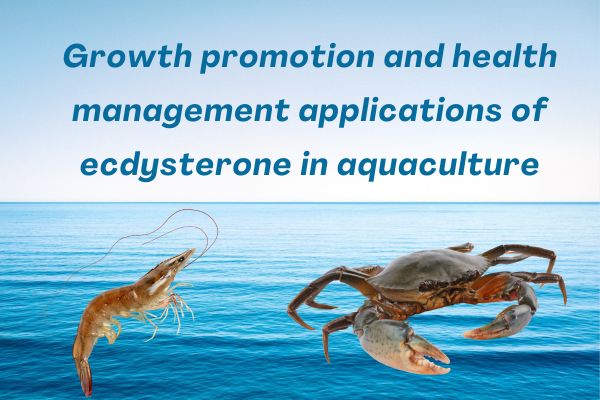Aquaculture is one of the world’s increasingly important areas of food production to meet the growing global demand for food.However,with the development of the aquaculture industry,the challenges are also increasing,such as water pollution,disease outbreaks,and instability of the growth cycle.Ecdysterone has attracted a lot of attention as an effective tool in dealing with these problems.This paper will explore the use of ecdysterone in aquaculture and its potential to improve the sustainability and productivity of the aquaculture industry.
The basic principle of ecdysterone
Ecdysterone is a class of bioactive substances that affect the growth and development of aquatic organisms,mainly by promoting the ecdysterone process of organisms.Molting is a natural physiological phenomenon,and aquatic organisms usually shed their skin regularly during growth to gain greater size and greater adaptability.Ecdysterone can simulate this physiological process,prompting the organism to shed its skin more frequently,thus achieving a faster growth rate and higher growth rate.
The application of ecdysterone in the field of aquaculture
1.Promote growth
Ecdysterone is widely used in aquaculture to promote the growth of fish and crustaceans.By giving organisms ecdysterone on a regular basis,they can molt multiple times in a short period of time,achieving faster weight gain.For commercial farming,this means shorter growth cycles and higher yields,thereby reducing production costs.
2.Improve the health of organisms
Ecdysterone also helps improve the immune system and resistance of aquatic organisms.Frequent molting helps remove parasites and pathogens,reducing the risk of disease outbreaks.This helps reduce reliance on antibiotics and other drugs,thereby reducing the risk of drug residues and environmental contamination.
3.Improve feed utilization
Ecdysterone can improve feed utilization in aquatic organisms because new skin is usually more efficient at absorbing nutrients.This means less feed is wasted,while reducing the environmental impact of the farming industry.
4.Adapt to instability
Ecdysterone can also help aquatic organisms better adapt to unstable environmental conditions.When water temperature,salinity,or other environmental factors change,frequent molting can help organisms adapt more quickly to new conditions,reducing stress responses and mortality.
Sustainability and potential
The application of ecdysterone in aquaculture is expected to improve production efficiency and sustainability.By reducing growth cycles,increasing yields and reducing drug use,farming can reduce resource consumption and environmental pollution.In addition,the use of ecdysterone can also help the farming industry better adapt to climate change and environmental instability.
However,the application of ecdysterone needs to be carefully managed to ensure the health and well-being of the organism.Excessive use of ecdysterone may cause stress and adverse effects on the organism.Therefore,regulation and research are necessary to ensure that ecdysterone’s use in aquaculture is sustainable and safe.
conclusion
The application of ecdysterone in aquaculture brings many potential and opportunities for this industry.By promoting growth,improving health,improving feed utilization and increasing adaptability,ecdysterone contributes to the sustainability and productivity of aquaculture.However,its use must be carefully managed to ensure the health of the organism and the stability of the environment.Ecdysterone research and regulation will continue to contribute to the development and sustainability of the aquaculture industry.
Note:The potential benefits and applications presented in this article are derived from the published literature.
Post time: Oct-17-2023
